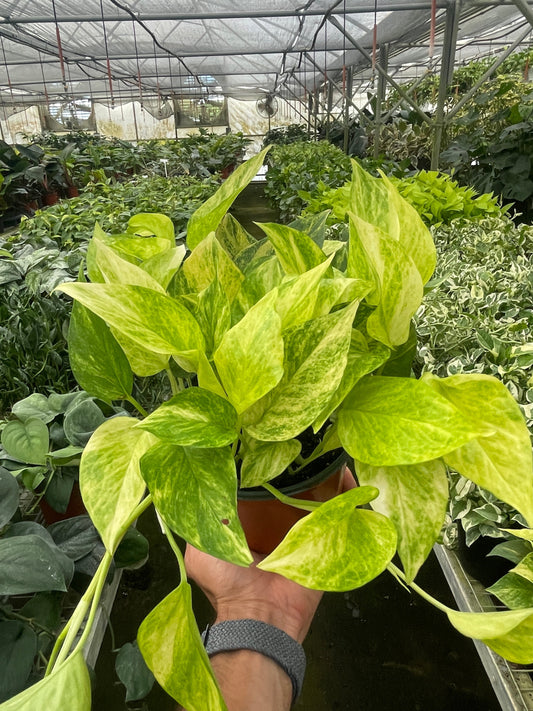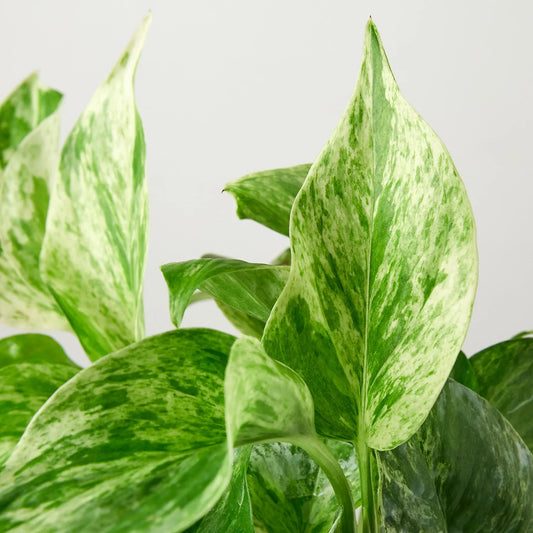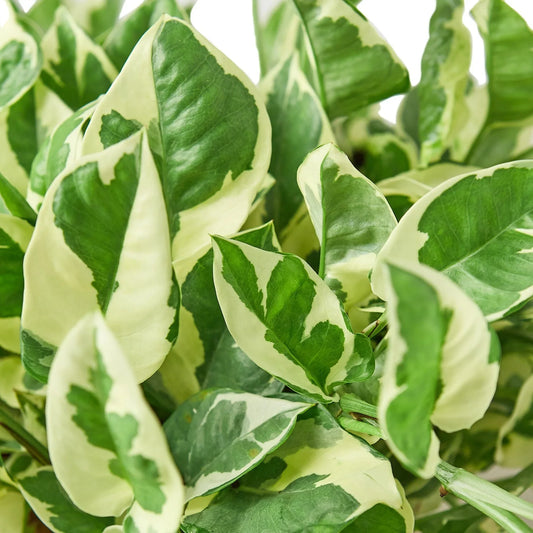How To Support Your Snake Plant
Cafe Planta Team
Snake plants, also affectionately known as "mother-in-law's tongue," have become a beloved choice for plant lovers everywhere. Their striking, upright leaves and hardy nature make them a perfect addition to any home, whether you're a seasoned plant parent or just starting your journey with indoor greenery. But even the easiest plants need a little TLC from time to time, and snake plants are no exception.
This post will walk you through how to support your snake plant so it thrives. From understanding its basic needs to tackling common issues, you'll find practical tips and insights to help you keep your plant healthy and happy. Let's get started!
Understanding Your Snake Plant's Basic Needs
Before diving into the specifics of supporting your snake plant, it's crucial to know what makes this plant tick. Snake plants are native to the arid regions of West Africa, which gives us a clue about their care preferences. They're not just resilient; they're downright tough! But, like any living thing, they have their preferences.
First off, snake plants love indirect sunlight. If you've got a spot in your home with bright but not direct sunlight, your snake plant will likely be a happy camper. However, they're quite adaptable and can tolerate low-light conditions, although growth might be slower.
When it comes to watering, less is more. Overwatering is one of the most common mistakes made with snake plants. They thrive on neglect in this regard, so let the soil dry out completely between waterings. This might mean watering every two to six weeks, depending on your home's humidity and temperature.
Temperature-wise, these plants prefer warmer environments, ideally between 60-80°F (15-27°C). They're not fans of cold drafts, so keep them away from windows or doors that might expose them to chilly air.
Choosing the Right Pot and Soil
Believe it or not, your choice of pot and soil can make a significant difference in the health of your snake plant. Let's start with the pot. Snake plants do best in pots with drainage holes to prevent water from pooling at the bottom, which can lead to root rot.
As for soil, these plants prefer a well-draining mix. You can use a standard cactus or succulent potting mix, which typically contains sand or perlite to improve drainage. If you're a DIY kind of person, you can make your own mix by combining regular potting soil with sand or perlite.
When repotting, choose a container that's only slightly larger than the current one. Snake plants like to be snug in their pots, and a pot that's too large might hold more moisture than necessary, increasing the risk of overwatering.
Providing Proper Support for Upright Growth
Snake plants are known for their tall, sword-like leaves that grow upright, creating an eye-catching display. However, sometimes you might notice your plant's leaves leaning or drooping, which could indicate a need for support.
To help your snake plant maintain its upright posture, consider the following:
- Staking: Use bamboo stakes or plant stakes to gently support leaning leaves. Insert the stake into the soil, taking care not to damage the roots, and loosely tie the leaves to the stake with garden tape or soft string.
- Pruning: If some leaves are beyond saving and continue to droop, it might be time to prune them. Use clean, sharp scissors or pruning shears to cut the affected leaves at the base. This encourages new growth and helps the plant focus its energy on healthy leaves.
- Light Adjustment: Sometimes, leaves droop because the plant is stretching for more light. If possible, gradually move your snake plant to a brighter location to encourage more upright growth.
These simple steps can help your snake plant regain its elegant, upright form.
Watering Tips and Tricks
Watering is one of the most crucial aspects of snake plant care, mainly because they are so sensitive to overwatering. Here's how you can get it just right:
Check the Soil: Before watering, stick your finger into the soil about an inch deep. If it feels dry, it's time to water. If it's still moist, wait a few more days before checking again.
Seasonal Changes: Remember that your plant's watering needs might change with the seasons. During the growing season (spring and summer), your snake plant will need more water. In the fall and winter months, reduce watering as the plant's growth slows.
Watering Technique: When it's time to water, do so thoroughly. Water until it starts to drain from the bottom of the pot, ensuring the roots are getting enough moisture. Avoid letting the plant sit in standing water.
By following these tips, you'll keep your snake plant well-hydrated without overdoing it.
Dealing with Pests and Diseases
Even though snake plants are hardy, they're not entirely immune to pests and diseases. The most common pests that might take up residence on your snake plant include spider mites and mealybugs. Luckily, they're usually easy to spot and treat.
For pest control:
- Inspection: Regularly check your plant for signs of pests. Look for webs or tiny insects on the leaves, and if you spot any, act quickly.
- Washing: Use a gentle stream of water to wash off pests from the leaves. This can help reduce their numbers significantly.
- Neem Oil: For more persistent infestations, consider using neem oil or insecticidal soap. Apply it according to the product instructions, usually once a week, until the pests are gone.
Disease-wise, root rot is your biggest enemy, mainly caused by overwatering. Ensure your pot has good drainage and that you're not watering too frequently to prevent this issue.
Creating a Snake Plant-Friendly Environment
Setting up the right environment for your snake plant is key to its success. While they're not too picky, a few adjustments can really help your plant thrive.
Humidity: Snake plants prefer low to moderate humidity. If your home is particularly humid, consider placing your plant in a room with less moisture, or use a dehumidifier if necessary.
Temperature: As mentioned earlier, snake plants enjoy warmth. Keep them away from cold drafts, air conditioning vents, and heaters that might dry them out.
Companions: Consider pairing your snake plant with other low-maintenance plants like pothos or ZZ plants. They share similar care needs and can create a cohesive look in your space.
By tailoring your plant's environment to its preferences, you'll set it up for long-term happiness.
Recognizing and Solving Common Problems
While snake plants are generally trouble-free, you might encounter a few common issues. Here are some signs to watch for and how to address them:
- Yellowing Leaves: This can be a sign of overwatering. Check your watering schedule and ensure the soil dries out between waterings.
- Browning Tips: Often caused by underwatering or low humidity. Adjust your watering routine and consider moving the plant to a more humid location.
- Soft or Mushy Leaves: This indicates root rot, usually from overwatering. Remove affected leaves and let the soil dry out completely before watering again.
By keeping an eye on your plant and responding to these signs, you'll keep your snake plant in top shape.
Enhancing Your Home with Snake Plants
Snake plants are not only easy to care for, but they're also fantastic for interior design. Their sleek, architectural shape makes them a great fit in various settings. Here's how you can incorporate them into your home decor:
Statement Piece: A large snake plant can serve as a striking focal point in a room. Place it in a decorative pot that complements your decor style for added effect.
Grouping: Pair your snake plant with other plants of different heights and textures to create an interesting plant display. This adds visual interest and a touch of nature to your space.
Low-Light Areas: Use snake plants in parts of your home where other plants might not thrive, like hallways or bathrooms with low natural light. They'll add greenery without requiring perfect conditions.
With a little creativity, snake plants can elevate your home decor in unexpected ways.
Pruning and Propagation
Pruning your snake plant isn't just about aesthetics; it's also about promoting healthy growth. Here's how you can keep your plant looking its best:
Pruning: Trim away any dead or damaged leaves at the base. This not only improves the plant's appearance but also encourages new growth.
Propagation: If you're feeling adventurous, try propagating your snake plant. You can do this by dividing the rhizomes or rooting leaf cuttings in water or soil. It's a fun way to expand your plant collection or share with friends.
Regular pruning and occasional propagation can keep your snake plant healthy and even multiply your plant family!
Final Thoughts
In summary, supporting your snake plant involves understanding its basic needs, choosing the right pot and soil, providing adequate support for upright growth, and recognizing common problems. By following these tips, you'll help your plant thrive and enhance your home's decor.
At Cafe Planta, we're passionate about helping you care for your plants. Whether you're looking for plant care accessories or advice, we're here to support you. Feel free to email us or reach out on Instagram. Let's connect and grow our love for plants together!



















